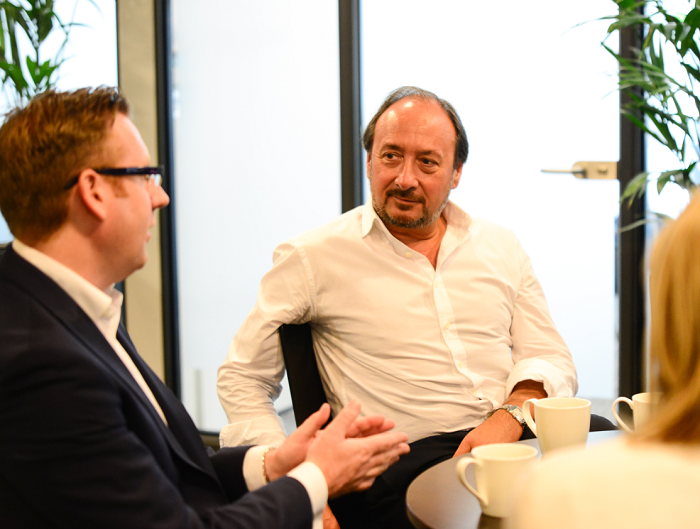How to create a compelling press release
Chris Hewitt, CEO of public relations company Berkeley thinks most press releases are boring and in need of a desperate shake-up. In a new Berkeley whitepaper Chris pinpoints the common mistakes PRs make and presents a new template for transforming conventional press releases into compelling content. Chris chats to us about how PRs can update their practices, making boring information interesting, and improve their brand storytelling.
What inspired you to write the white paper ‘The 7 deadly press release sins’? I set up this business many years ago when it was quite normal to send out this kind of material. With the march of time, you’d expect things to be more sophisticated right? So I started looking again on the news pages of tech companies quite recently and guess what? Times haven’t changed at all. Actually, it’s worse. We still see the same old fodder only I would now say there is even more of it.
What are the common mistakes PRs make when writing press releases? Three things we hear repeatedly from journalists when we do our research. The first is that there is a lack of a sense of what makes news, the second is that there is poor targeting of the message, and lastly not explaining why anyone should care. It’s not enough just to put out a story because the client says so. We need to add value and inspire our clients to look at their storytelling in a way that inspires people to want to know more.
You say that PRs should avoid using long headlines in press releases and instead focus on the human interest elements of your key speakers and their content. Why is this approach more effective?
Human interest is an important component in the story arc. People relate to people. The experiences of the key characters in your story are much more relatable if they mirror the audience.
Every good story will have victims and heroes. Just remember not to depict your brand or client as the hero in the story. The real hero is generally the customer/consumer and you need to find a way to show the hero facing up to adversity and conquering problems against all odds. Your brand is more like a trusted advisor or mentor in the story. Think Star Wars. Think Yoda. Be short, sharp and memorable and let your audience fill in the blanks. Let them do some of the work.
It is mentioned in the white paper that that there is an opportunity to dramatise the problems and challenges the customer face, why is the important? Human beings are born problem solvers. For that reason alone, we gravitate towards the negative because it stimulates the mind. Consider two people gossiping over the garden fence. When you listen, you will hear them talking about the train that arrives late, not the one that arrives on time. Now look at the lead news stories today, tomorrow and the day after. Bad news sells and a lot of journalists think that everything else is just publicity.
You say that to stand a chance of media coverage, you need to think plot. Can you explain what you mean by this? A beginning, middle and end, but start your story with the end in mind so that you set up your audience to understand why they should tune in.
By adding challenges and obstacles such, as adversity, struggle and conflict and mixing in rich and relatable characters, the audience is far more likely to make an emotional connection with what you have to say.
A list of features, benefits as bullet points in chronological order won’t cut it. Every invention ever created was designed to solve a problem. The same applies to your business or product. Lead with the problem and get the audience onside early on.
Why is it important for PRs to create stories that are specific to certain markets? Stories that commonly fail are the ones that are not relatable. They are generic and are far too broad in their appeal. Dig deep into the audience personas. Then dig deeper and truly understand their pressures. Why should what you have to say be important? You can tell the same stories many different ways by personalising the message to the job titles and industry sectors you want to reach.
How can PRs create stories that inspire audiences and the media that serves them?
Think drama. Ask yourself; how can I dramatise the problem we solve?
For example – don’t say your software ‘helps save businesses money’. Tell them straight. Have a cause. Bang the table and say it’s time to put a stop to money wasted on software functions we don’t use. Give examples of this senseless waste. Find people to testify. Use research. Show, don’t tell the story. Bring to life but end on a happy note. People want to hear about the problem. They want to relate to the problem. And they want to know how to solve the problem. Now you are storytelling.
What do you as see as the future of press releases in terms of how stories will be told? Our point is that traditional press releases are still traditional and it’s time to stop. Often the business wants to get these ‘corporate’ messages out. But there is another way. Let’s breathe life back into press ‘story’ because there is a whole world out there distracted like never before. Let’s inject a little bit of Hollywood into our messages to stand out in a crowd.







Leave a Comment